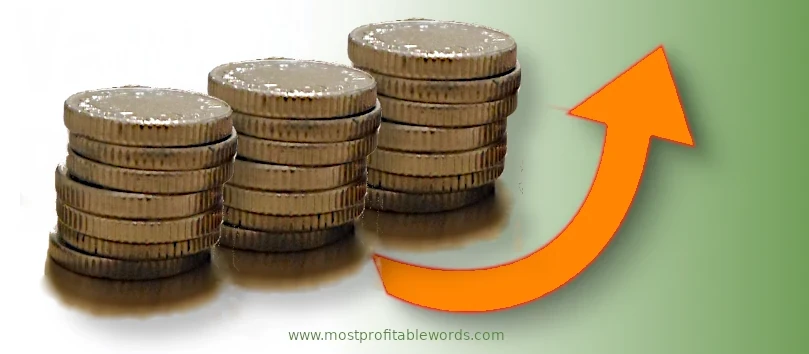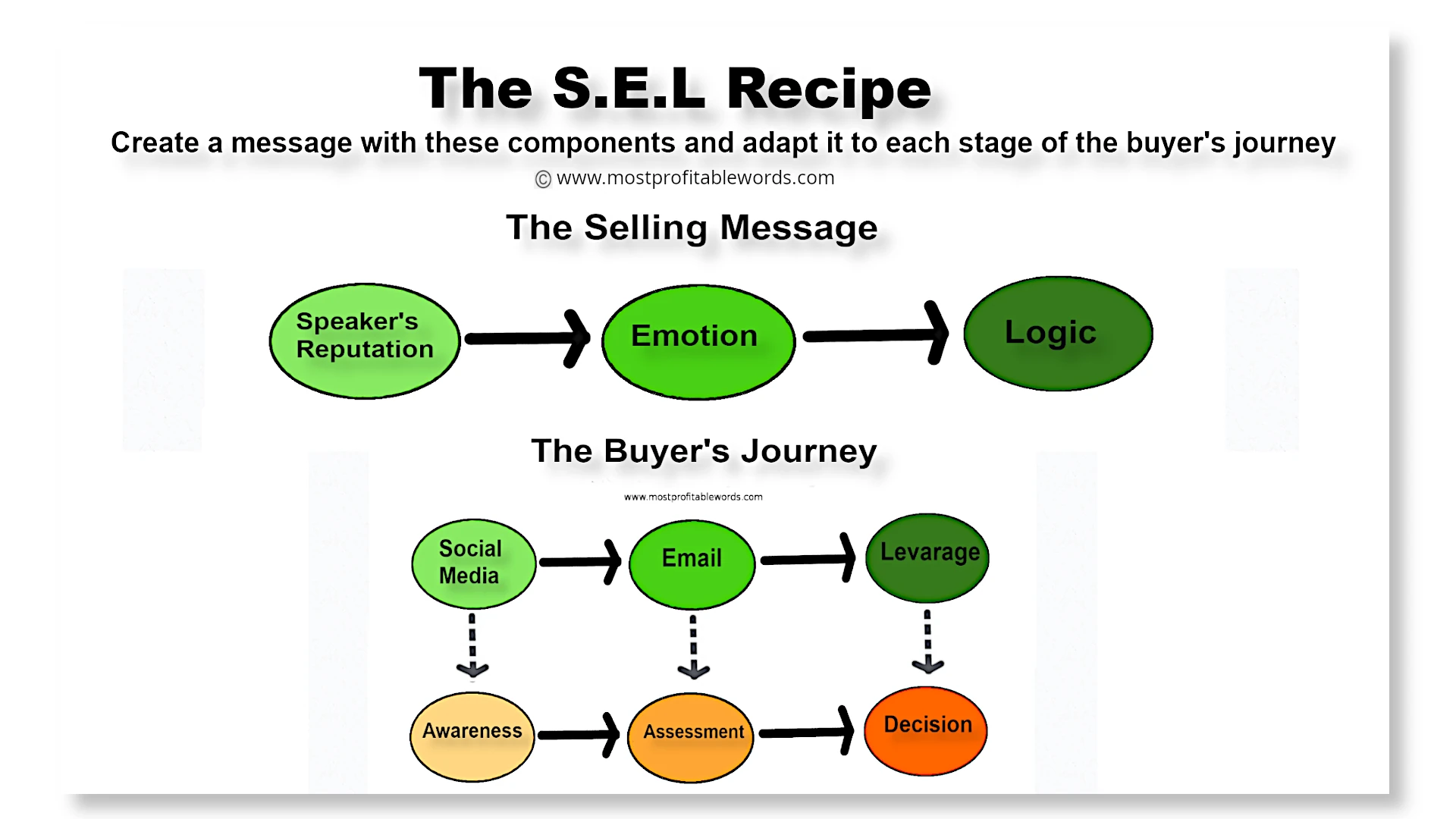
Keys to Success in Sales
To create an effective message every time you speak to your potential customer, it's convenient to have a shortcut such as the S.E.L recipe so you can do it quickly and compellingly
August 23, 2023
In the rush of everyday business life and the social media bustle, you have the task of engaging your customer every day, and even every hour of the day.
Pff! It's so much work!
I know. I've been there.
That's why you need a recipe to do your task quickly and effectively.
To get advantage of the keys to success in sales offered in the S.E.L recipe, I assume you have a good knowledge of your target customer and a great product to sell.
Also, I'm sure you know how to present your product to the public in an attractive way.
Great!
Now let me introduce you to the S.E.L recipe, a quick overview of the steps you have to follow.
Modern Customer
In a complex world where people feel pulled in different directions and spend their days multitasking, their adrenaline runs high.
So no doubt they feel anxious and act in a rush,struggling to get some free and relaxing time.
To make matters even worse, publicity of all kind turns up in their faces constantly online and offline.
According to Kormath, author of Snap Selling, modern customers show the following characteristics:
-
Impatient/stressed: Buyers want to understand as soon as possible if what you offer is the right solution for them. They don't want to waste their time reading your free downloads or white papers.
Their jobs demands focus and multitasking all day long.Their families and social life also demand their presence and interaction. They are exhausted.
-
Overwhelmed by hard processes. People tend to avoid any activity that demands too much time or effort.The reason is their agendas are full and don't have time for extra meetings, tasks or thoughts. they are threatened by downsizing and reorganization at work, having to adapt every time. They need some relaxing and free time but have little or no opportunity to do so.
-
Absent-minded. People pile up responsibilities,scheduled activities and deadlines. They have to pay attention to job tasks, family life, relationship, financial issues and on top of that tons of offers to buy a new product on the spot.
With the new technologies, people are always connected to their job and responsibilities so even if they are talking to you, they are still thinking about that problem he couldn't solve today at the office. Their attention goes away in the twink of an eye.
-
Challenging. These buyer expect to get the best available from you. They are not interested in an offer he can easily find on search engines. They expect exceptional and customized service.
If you can offer a product or service that will really help them with their processes or objective they will certainly pay attention to you.
This type of modern customer has to be approached with a strong, simple and clear message.
When you get in touch with them you also have to bear in mind what stage of their buyer’s journey they are, creating different messages for different stages.
The S.E.L Recipe
This set of instruction helps you have a quick overview of what you have to consider to create an effective engaging message. It's handy when you're in a rush and have to create a strong and clear message that engages your potential customer.
To be successful in the creation of an effective piece of communication you have to consider these two elements:
- The ingredients of successful messages
- The stages of your buyers' journey

The Selling Message
Now,…
What will you say to your potential clients on each stage of their journey? This is quite important. You have to stop them, engage and retain them until you sell them your product.
Every stage has its own purpose and intention.
Whenever you want to create an effective selling message you should consider including three elements introduced by Aristotle, in his book Rhetoric, an old Greek guide on persuasion mastery, written in 4th century BCE.
Aristotle called these elements pathos(emotion) ethos ( credibility) and logos ( logic argumentation) that can also be reminded using the word SELL too.
You can easily remember them with the acronym S.E.L
S Stands for Speaker's Reputation
This represents your authority and credibility to deliver a message. Your background and profession are quite important if related to the topic you're speaking about. Also, your experience and honesty as perceived by the audience.
If I learn of a new skin treatment and the speaker is a doctor, I can conclude he's the right person to speak about this topic. His background and experience makes the message more credible.
For brands, this means their purpose, quality and everything that differentiate it from the rest. Their message have to be consistent in their message together with their mission and value. This is also reinforced with your years of experience and the public preference.
The speaker's reputation has the effect of being perceived as reliable, qualified and trustworthy and so, people cherish their points of view.
E Stands for Emotion
To engage your audience you have to evoke their emotions. How can you do that? Use detailed descriptions,testimonies and the best of all is storytelling. This approach is a great tool because human beings are not only wired to pay attention to stories but also connect those experience with their own experiences.
This kind of language trigger an emotional response and that's the reason why a brand's message have to evoke a feeling. All buying is triggered by emotions, believes and values.
The story of a boy and his dog lost in the woods, sleeping one close to the other is a description that triggers and emotional response most people can relate too.
L Stands for Logic
Logic creates a rational argument that helps your customers justify the action their emotions have triggered. They can conclude that the explanation makes sense so it's believable.
Statistics, facts, features and detailed information about certain topics creates a rational understanding of the topic, completing the process of persuasion.
As you may know all human decisions are based on emotion but then buyers try to justify their actions rationally. Perhaps after buying an unnecessary item they think it was so cheap that's not a bad idea to have an extra one.
What is the Buyer's Journey?
The buyer’s journey is the path customers take from the moment they realize they have a problem, consider different solutions available and finally buy the one they consider the best option available.
Now, you, as the person who is looking for customers can create a detailed route of action of this journey and get an insight of your potential customer’s behavior on each stage. This mapping out also shows you how one action takes to the next and check if you can improve some areas to boost your customer conversion.
Every stage has its own purpose and intention.
-
Awareness stage: Customers realize they have a problem. So, speak about the problem, the pain points or desires the audience has. Use educational and user-oriented content, written in simple language. Videos and infographics are also engaging and helpful.
-
Assessment stage: Customers assess different available solutions to their problem but they are not ready to buy yet. They read product reviews and testimonials. Speak about the unique transformation your product offers to them. Compare and differentiate your product to the competition and show them why your solution is the best.
-
Decision stage: Customers have already chosen one preferable strategy to solve their problem. They are ready to buy and they want to learn about price, guarantees and durability. Your task is to reinforce your customer decision.

This may sound a bit complex for somebody who's new to sales. That's why I've tried to create a simple technique to understand it. So, the only thing you have to remember is the acronym S.E.L where...
S Stands for Social Media
Social media is the best place to build your brand awareness.
Why?
Because according to Statistica more than 4.59 billion people use social media regularly in the world.
So, it's mandatory to be present where such a large crowd hangs out with friends and acquaintances, share their points of view, updates. and publish pictures and videos of their recent vacation or their pets' mischief.
Write a social media plan,set your goals and KPIs ( key performance indicators) and check your performance's progress.
Be consistent in front of your target audience so people can easily recognize your logo and colors, the kind of product you offer and what your business stands for.
E Stands for Engagement and Email
Once you have people interested in what you have to offer, it's time to reach them with your email marketing strategy This helps you deepen your relationship with your potential customer.
You have the opportunity to talk to every person directly, in private, turning up in their own inbox.So, you can use regular emails delivery to send more information about your products, present exclusive offers and encourage them to buy your products or services.
L Stands for Leverage
Now that your potential customer is interested in your product and reads your emails regularly it's time to leverage this relationship. Influence your customers during their decision stage to choose your brand, minimizing their hesitations and fears, offering a guarantee, convenient payment methods and more.
Describe vividly why your product or service is the best solution for their problem. Empathize the transformation your product will bring into their life.
Conclusion
Follow these steps and save money and time with the S.E.L recipe. It's a quick guide for everyone who's in a hurry to create an effective selling message, including the stages of the buyer's journey and the basic component of a an engaging and believable piece of communication.
Need help creating your business message? Contact us and start for free.
Add a comment